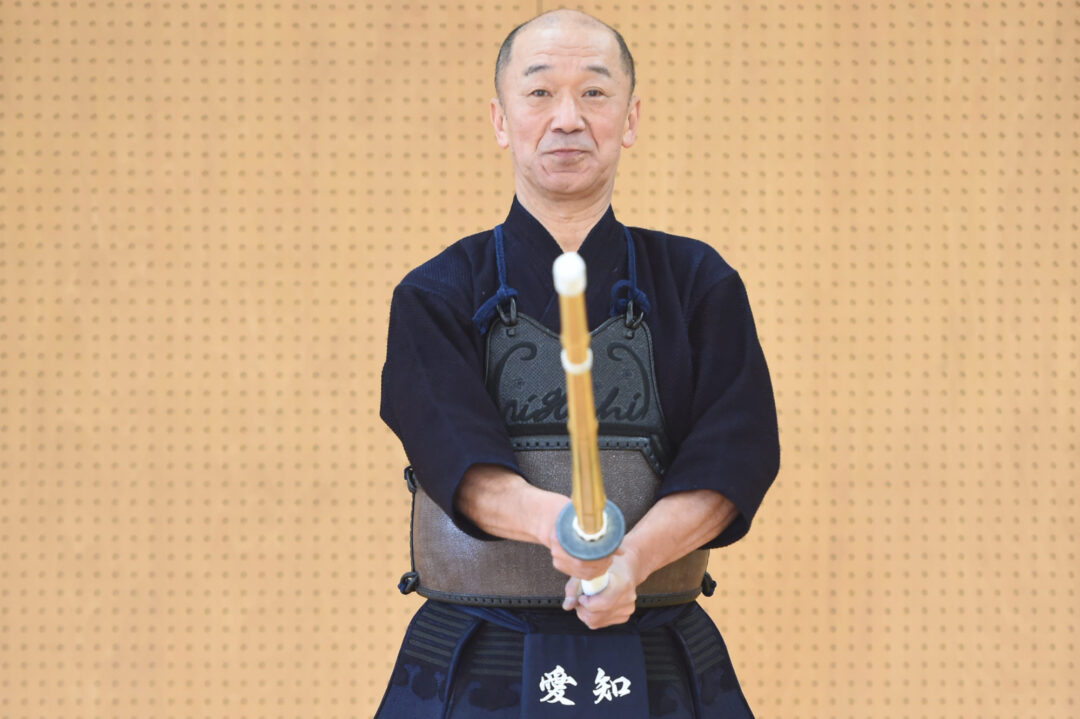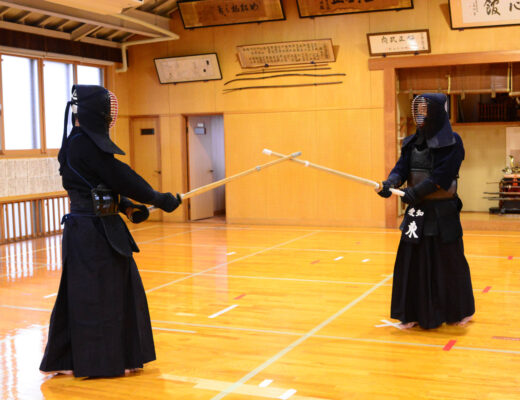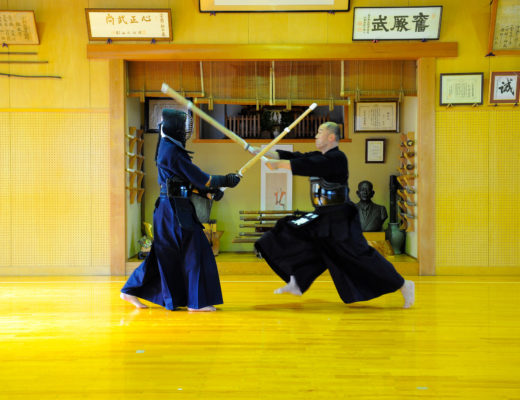2023.6 KENDOJIDAI
Translation: Jouke van der Woude
The Kamae is about the left hand, left leg, and left hip. By focusing on the left side, we can generate a more powerful Seme. To do this, it is essential to base our movements on the left leg in particular. In this article, we will introduce the footwork teachings that Higashi Yoshimi, who continues to diligently train himself, values greatly.
Higashi Yoshimi, Hanshi 8th Dan
Born in 1957 in Kagoshima Prefecture, Japan, he attended Hosei University after graduating from Shonan High School. He later served in the Aichi Prefectural Police and retired as the Chief Instructor of the Aichi Prefectural Police. Currently, he holds positions as Honorary Chief Instructor of the Aichi Prefectural Police, Head Instructor of the Seijoh University Kendo Club, and Head Instructor of the Nagoya Toyopet Kendo Club. His notable achievements include winning the All Japan Invitational 8th Dan Kendo Championship, competing in the All Japan Kendo Championship, participating in the All Japan Tozai-Taiko (East VS.West Japan) Kendo Taikai, and winning the National Athletic Meet, among others. He also served as coach of the Japanese national team in the 19th World Kendo Championships (WKC).
The importance of a dynamic Kamae
Creating a posture for striking with the left foot
While it is widely known that a proper Kendo Kamae is crucial, when assuming our Kamae, it’s important to ensure that our left hand, left hip, and left leg are well positioned, and we try not to disrupt this posture as much as possible. When people think of Kamae, they often associate it with a static state, but it’s meaningless if we can’t maintain stability during movement. The left leg, in particular, is crucial. We must firmly plant our left foot on the floor and keep it in a condition where we can strike at any time. First, establish a stable Kamae, and then focus on developing fluid footwork. This will enable us to break down our opponent’s defenses.
What’s crucial in the Kamae are the alignment of the left hand, left hip, and left leg on the left side of our body. If this left side is not properly aligned, we won’t transmit pressure to your opponent. While it’s important for our spirit, sword, and body to be in harmony, it’s equally important for our Kamae to be in harmony before striking. Recently, the All Japan High School Kendo Championship was held in Aichi Prefecture. The competitors who advanced to the top were all skilled at footwork and executed strikes effectively when the opportunity arose. It’s clear that their success was due to their excellent footwork, and it reinforced my belief that thorough footwork training is essential at any age and level. Establishing an ideal Kamae in a stationary position is not particularly difficult. However, doing so while closing the Maai, applying Seme, destabilizing, and striking are not as straightforward. It’s common for individuals to become unsteady before they can unbalance their opponents, but maintaining our own balance while closing the Maai is crucial.
Kendo footwork involves four types: Ayumi-ashi, Okuri-ashi, Tsugi-ashi, and Hiraki-ashi. When closing the Maai, it’s generally best to use Okuri-ashi. We need to pay close attention, especially when moving from Issoku-itto to Uchi-ma (striking Maai), and Okuri-ashi is commonly used, as mentioned earlier. When closing the Maai significantly, our intentions can become predictable to your opponent, so we need to minimize and refine our movements.
In addition to the Okuri-ashi, I sometimes use the Tsugi-ashi. This is less likely to be detected by the opponent, making it a recommended choice, especially for women or middle-aged individuals with weaker leg strength. The key is not to rely entirely on the Tsugi-ashi but to study how to minimize detection by the opponent. Footwork training, like Suburi, can be done alone. By practicing diligently, we will develop precise footwork, so it’s essential to continue with patience.
Striving for correct strikes
Working towards strikes with Okuri-ashi
The rest of this article is only available for Kendo Jidai International subscribers!





